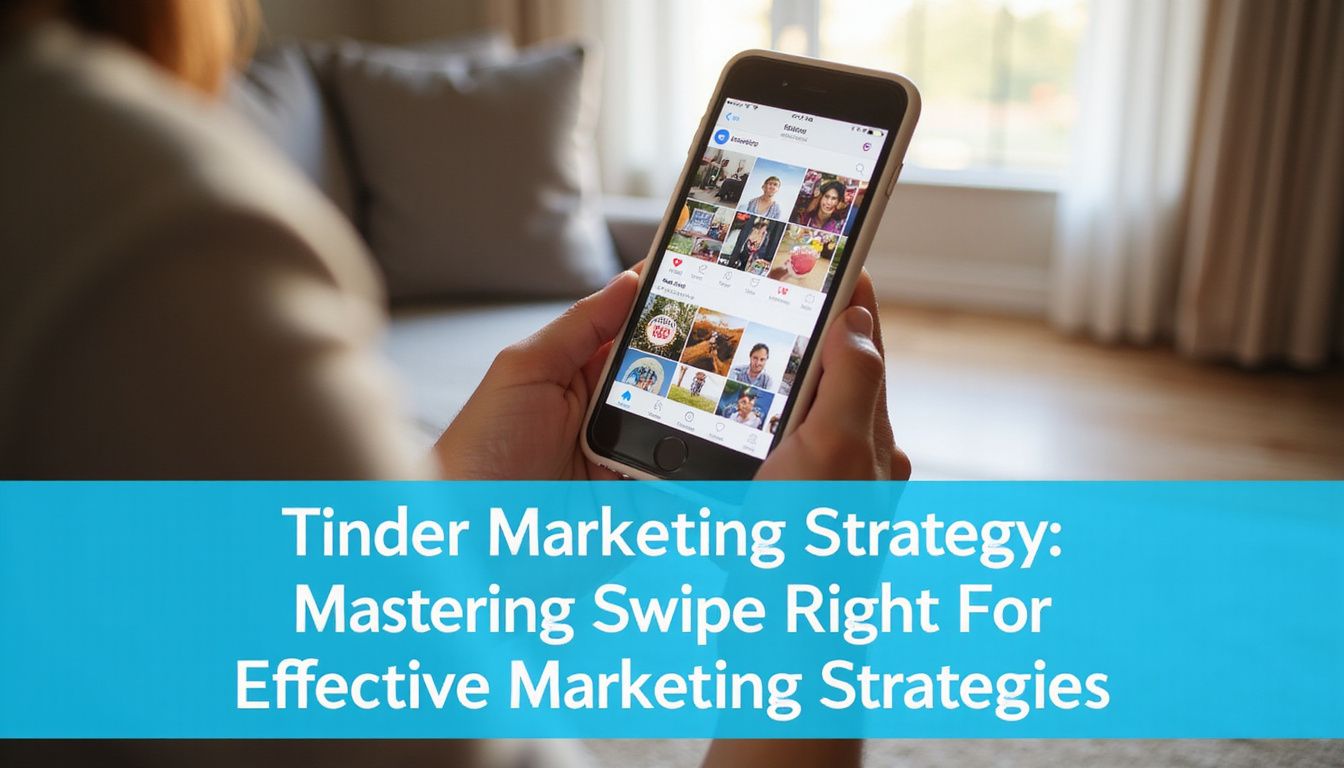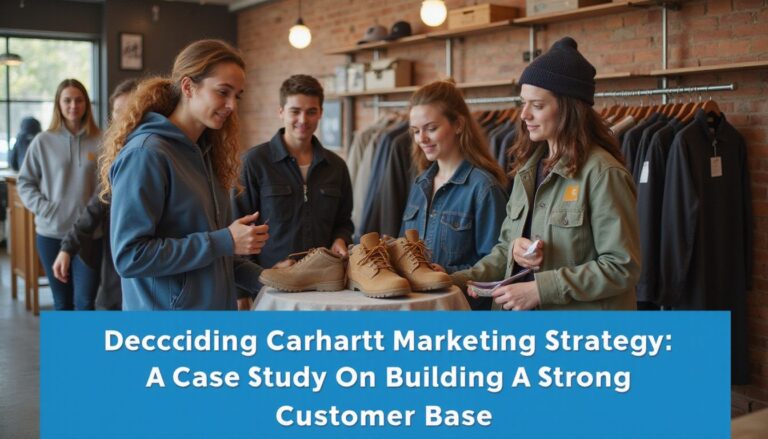Do you find it hard to catch young people’s attention and boost interest in your brand? I understand how tough that can be. That’s why I took a closer look at Tinder, which gained 10 million downloads in just four months after its launch in September 2012 by using smart marketing moves. 2 In this post, I’ll share key lessons from Tinder’s marketing strategy. You’ll learn how creative campaigns, social media content, friendly conversations, and influencer partnerships can attract Gen Z and millennial users. 1 Keep reading to discover how you can get people swiping right on your brand too.
Key Takeaways
- Tinder hit 10 million downloads just four months after its 2012 launch—mostly from Gen Z and millennials who now form over half its American user base.
- Connecting naturally with its 66 million users worldwide, Tinder uses chatty style marketing, memes, and clever stunts, like creating a fake Deadpool profile.
- At the SXSW festival in 2015, Tinder ran its “Ex Machina” promo by matching users with “Ava”… who turned out to be a chatbot promoting the sci-fi movie.
- Their Valentine’s Day promo with Domino’s featured a pizza-loving “Dom Juan” chatbot, increasing pizza sales by 10% and returning 35 times the money spent on ads.
- Tinder stays popular on social media with casual humor and friendly content—reaching 444,000 Instagram fans and 234,000 followers on Twitter.
Tinder’s Target Audience

I’ve noticed Tinder really gets its users. The app mainly targets young adults between 18 and 25—over half of its U.S. users in 2021 were Gen Z. 2 Makes sense, right? Quick swipes, visual charm…
that’s exactly what this age group wants. In fact, my research found that around 79% of people under 30 have given Tinder a shot at least once. Today, Tinder has over 66 million users around the globe—that’s huge. 1 And it shows the app really clicks with audiences worldwide.
Tinder smartly markets itself to younger crowds through memes, social media humor, and campus-based events. They speak the language of millennials and Gen Z, who prefer dating apps that keep things simple and quick.
Tinder succeeds because it understands that young users prioritize fast matches and easy, smooth interactions. Most college students I talk to keep Tinder installed—even if they’re not checking it every day.
Young people love swapping stories about their dates and funny app experiences. That casual sharing helps Tinder grow through word-of-mouth, drawing even more users to the platform.
Core Elements of Tinder’s Marketing Strategy
Tinder’s marketing magic works through smart, layered plans that grab attention fast. I’ll show you the key parts that make their strategy so sticky with users and help the dating app stand out in a crowded market.
Conversational Marketing
I chat with Tinder users directly through the app’s messaging feature—that helps build real, genuine connections. Every day, Tinder uses social media to kick off fun conversations.
They post funny memes, ask interesting questions, and respond quickly to user comments, which helps people feel valued and heard.
Ads on Tinder blend right into your regular feed—much less annoying this way. Users can comment on these ads, just like normal posts, keeping interactions natural. This conversational style fits dating apps perfectly, because dating is all about meeting new people and starting relaxed conversations.
Tinder understands their young audience dislikes stuffy ads. Instead, these users prefer brands that sound friendly and casual. Using a laid-back, easygoing voice makes their ads less about selling, more about sharing ideas. 3
Meme Marketing
Just shifted gears from chat marketing to meme marketing—Tinder’s secret sauce for connecting with young folks. Memes help Tinder catch the eyes of 18-25 year-olds, who spend hours each day scrolling their social feeds.
The app flips viral jokes into clever dating moments—real, quick, and funny. 2
A great example: Tinder’s spin on the “Binod” craze, turning a random viral name into an engaging love story online. Another hit—the “Adulting can wait” campaign—took Instagram and Twitter by storm, proving Tinder truly gets internet humor.
Memes click because they’re fast, witty, and easy to share. They speak the language of young users, making Tinder feel like a buddy, not a corporate ad.
Guerrilla Marketing
I’ve watched Tinder nail guerrilla marketing—big buzz with small money. They stirred attention by setting up a Tinder profile for Deadpool during his movie launch. Users enjoyed swiping right on the sarcastic superhero. 3 Another clever move? Planting a huge matchbox in public spaces labeled with their catchy “it’s a match” slogan. People stopped, smiled, and shared pictures. These unexpected stunts don’t feel promotional—they feel fresh and fun.
But sometimes, brands mess up. Gap tried using Tinder without permission, and it didn’t go well. From running my own dating app campaigns, I’ve learned the value of bold, surprising tactics.
They get people chatting way more than typical ads do. 2
Influencer and Ambassador Collaborations
I team up with famous faces to get Tinder noticed. Stars like Ahsaas Channa, Tanmay Bhatt, Kareema Barry, and Ananya Pandey help spread the word. 2 They show fans everyday Tinder experiences.
Posts include fun dating stories, honest tips, and even minor app tricks—that fans love to see. This approach makes online dating feel safe and real, especially for people nervous to start.
Best part is, these stars actually use Tinder themselves. Their open and genuine posts connect easily with young people looking for real advice on dating apps.
Creative Marketing Campaigns by Tinder
Tinder has launched some of the most eye-catching marketing stunts in the dating app world. I want to show you how they grabbed attention with clever tricks that got people talking and swiping.
Ex Machina Campaign at SXSW
One of the sharpest marketing moves I’ve seen happened at SXSW in 2015. On Tinder, users matched with “Ava”, a friendly 25-year-old woman. She seemed genuine—asking thoughtful and personal questions, creating natural conversations.
After chatting for a bit, Ava casually directed people to her Instagram account. But once there, everyone realized Ava wasn’t even real. She was actually a smart chatbot created to promote “Ex Machina”, a sci-fi film premiering during SXSW on March 14. 4 The stunt perfectly mirrored the film’s story about artificial intelligence. 5 And everyone took notice. It got huge attention since users were genuinely surprised they’d flirted with an AI—exactly like the movie plot.
Sure, people felt a bit tricked, yet most admitted the approach was clever and creative.
Valentine’s Day Domino’s Collaboration
I spotted a great marketing move by Tinder and Domino’s on Valentine’s Day. Together, they launched the “Dom Juan” chatbot, dishing out funny and cheesy pickup lines to Tinder users.
The response was huge—Domino’s earned 35 times what they spent on ads. 6 Pizza sales shot up 10% from Valentine’s the year before. 7 This campaign succeeded by blending humor with practical perks.
Singles could laugh, have fun, and also grab pizza at a good price. Both brands came across as relaxed, relatable, and tuned into how people date today.
Amnesty International Awareness Campaign
Something caught my eye on Tinder on March 8, 2014. Amnesty International took control of the dating app for International Women’s Day—with a bold stand for women’s rights. 8 They shared clear, powerful facts on how many women around the globe still miss out on basic freedoms.
The goal was simple—encourage users to pause and think about rights they often assume are universal, right in the middle of casual swiping. Clever move, because Tinder reaches millions of young adults each day.
Blending dating culture with serious social issues felt natural and relatable—not pushy or preachy. Tinder users reacted well, which proves brands can use the app for more than promoting products.
Plus, social media quickly amplified and spread the message beyond just Tinder itself.
The Role of Social Media in Tinder’s Strategy
Social media forms the backbone of Tinder’s marketing approach, with platforms like Instagram and Twitter driving massive engagement. I’ve seen how they use these channels to share relatable content, run contests, and create viral moments that keep users swiping right.
Instagram Engagement
Tinder nails its Instagram game, boasting 444,000 loyal followers. 9 They keep their posts fun, casual, and relatable—making their brand easy to “swipe right” on, just like their app.
And they don’t stop there. Tinder runs regional Instagram pages too—like Brazil at 272,000 followers and India at 146,000—reaching local crowds easily. Their targeted ads hit younger audiences spot-on, proving Tinder knows exactly who their main users are. 1 Influencer collabs play a big role too, bringing in fresh faces and new users naturally. These partnerships feel authentic, spreading awareness across diverse groups and networks.
Twitter Conversations
I’ve noticed how Tinder nails their Twitter presence—over 234,000 followers loving their sharp, witty posts. Their humor hits home with younger users. For instance, they replied to Twitter’s “Agreed” post with, “Me when my crush says anything”.
Funny, relatable sarcasm goes over big with the app’s crowd. 1
Their approach is smart and simple; just 24 tweets over three months—but the engagement was huge. About 75% of those tweets were quick, text-based jokes. This casual style feels more like texts from your hilarious friend, rather than brand messaging.
Twitter lets Tinder build awareness naturally, through laid-back conversations and easy laughs. It fits perfectly with Tinder’s quick-swipe dating vibe.
How Does the EOS Marketing Strategy Compare to Tinder’s Marketing Strategy for Effective Audience Engagement?
Comparing the EOS marketing strategy to Tinder’s reveals distinct audience engagement tactics. While Tinder focuses on user-generated content and social proof, EOS emphasizes community building and educational resources. Understanding eos marketing approaches clearly showcases how targeted strategies can effectively resonate with diverse audiences, fostering loyalty and interaction.
Conclusion
Tinder nails marketing by really knowing their audience—and speaking in their voice. Memes, casual chats with users, surprise stunts… these tricks keep users swiping right. Social media is huge for Tinder, helping them reach younger folks who want real connections.
Even smart tie-ins, like Tinder’s pizza deal with Domino’s, show how dating apps can create fun ads people genuinely enjoy. Every swipe has a story behind it, and Tinder spins those little stories into marketing wins.
Next time you’re planning a campaign, think about what grabs attention and gets people interacting—the way Tinder does.
References
- ^ https://medium.com/@seanglatzer/tinders-digital-marketing-strategies-mastering-online-dating-5cf6956e7f4d
- ^ https://startuptalky.com/tinder-marketing-strategy/ (2023-03-10)
- ^ https://www.moloco.com/blog/the-tinder-marketing-strategy-unpacked-4-lessons-for-dating-app-marketers
- ^ https://www.theverge.com/2015/3/15/8218927/tinder-robot-sxsw-ex-machina (2015-03-15)
- ^ https://shortyawards.com/8th/ex-machina
- ^ https://econsultancy.com/10-deliciously-creative-domino-s-pizza-marketing-campaigns/
- ^ https://www.campaignlive.co.uk/article/dominos-pizza-gets-flirty-tinder-valentines-day/1280989 (2014-02-14)
- ^ https://www.trendhunter.com/trends/tinder-dating-app-1
- ^ https://keyhole.co/blog/tinder-social-media-strategy/ (2024-02-14)







